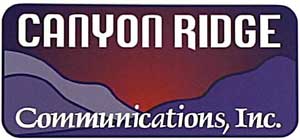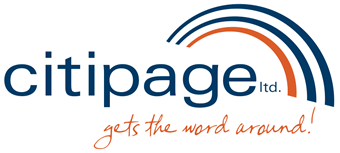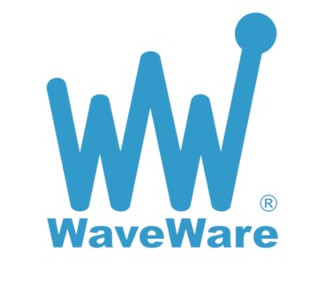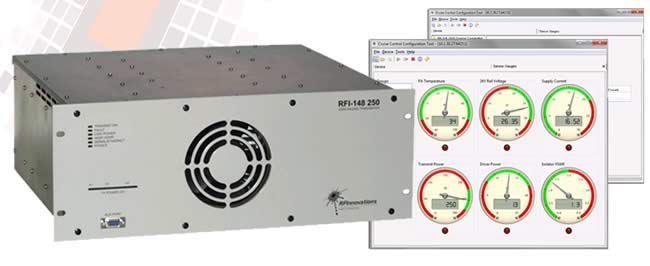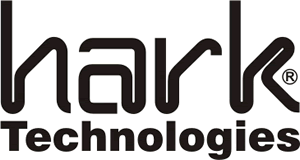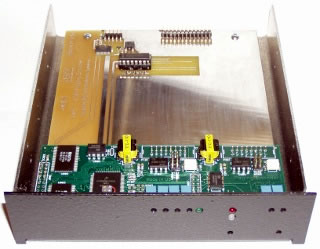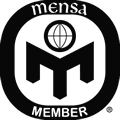Selected portions of the BloostonLaw Telecom Update, and/or the BloostonLaw Private Users Update — newsletters from the Law Offices of Blooston, Mordkofsky, Dickens, Duffy & Prendergast, LLP — are reproduced in this section with the firm’s permission.
| BloostonLaw Telecom Update | Vol. 18, No. 32 | August 25, 2015 |
Special Edition
FCC Denies AWS-3 Auction Discounts for DISH Network Partners As expected, the FCC voted unanimously on Monday to deny $3.3 billion in small business bidding credits to DISH Network Corp. affiliates Northstar Wireless, LLC (“Northstar”) and SNR Wireless LicenseCo, LLC (“SNR”) in connection with the AWS-3 auction (Auction 97) that ended last January. The ruling was adopted in a Memorandum Opinion and Order (FCC 15-104) that was released on Tuesday.
The FCC’s decision comes after a contested months-long review of the Northstar and SNR long-form applications and assessment of DISH’s financial and operating ties to the two companies. The Wall Street Journal reported last month that an order with staff recommendation to deny the small business eligibility claims of Northstar and SNR was circulating on the FCC’s Eighth Floor. See July 22 BloostonLaw Telecom Update.
With the denial, the Wall Street Journal cited DISH Chairman Charlie Ergen as saying the company had three options: refuse to buy the spectrum and pay a penalty; pay the additional $3.3 billion; or sue the FCC to overturn the decision. DISH said it was disappointed in the FCC’s decision because it had complied with all legal requirements in its bidding. “We will the review the order when it becomes available, as we consider our options going forward,” said DISH’s general counsel, R. Stanton Dodge. By way of background, Northstar was the winning bidder for 345 of the 1614 licenses being auctioned in Auction 97, with a total of $5,883,794,550 in net provisionally winning bids, and SNR was the winning bidder for 357 of the 1614 auctioned licenses, with a total of $4,111,773,225 in net provisionally winning bids. SNR and Northstar each asserted that it had less than $15 million in gross revenues over the past three years and was therefore qualified as a “very small business” Designated Entity (“DE”) under the Auction 97 rules. SNR and Northstar both claimed that they were not controlled by DISH, notwithstanding the fact that they are each 85 percent indirectly owned and capitalized by DISH, that DISH had agreed to manage their operations and build-out, and that DISH would operate and maintain their networks.
Based on the record of each of the applications and petitions to deny, the FCC concluded that DISH has a controlling interest in SNR and Northstar, and under the DE rules DISH’s gross revenues for 2011, 2012 and 2013 must be attributed to each of the applicants. Once DISH’s gross revenues are attributed to SNR and Northstar, each applicant is ineligible for small business bidding credits. As a result of the ruling, Northstar will be on the hook for $1.96 billion in additional payments, while SNR will be required to pay an additional $1.37 billion, if DISH wants to keep the spectrum licenses. Both companies have been ordered within 30 days to submit their additional payments, or to provide an irrevocable standby letter of credit in the amount of their additional payment that the Commission may draw upon if the full balance is not paid within 120 days. Failure of either company to complete payment or deliver the letter of credit by September 17th will result in a default, and additional default payments will be due under the rules. “Today, our review of two winning bidders in the recent AWS-3 auction has concluded that they in fact are not eligible for bidding credits,” said FCC Chairman Tom Wheeler in a written statement issued on Monday. “I’m proud that our thorough, fact-based analysis ensures that bidding credits only go to the small businesses our rules aim to serve.” Commissioner Mignon Clyburn, a staunch defender of the FCC’s DE program, concurred in the Commission’s ruling but issued a separate statement to highlight what she saw as an “unfortunate” result for Northstar and SNR, because she believed these entities “obviously lacked bargaining power when negotiating these agreements.” She also cited to the fact that the applicants’ LLC agreements each provide that if the applicants fail to qualify for bidding credits, that DISH will make the required payments to the Commission and the applicants much transfer all of their AWS-3 licenses to DISH. “I hope this case will not have an undue chilling effect on the ability of small businesses to enter into relationships with large investors,” wrote Clyburn. A statement from Commissioner Ajit Pai concluded that DISH maintains an extensive level of control over SNR and Northstar, thus eliminating any possibility that they are independent small businesses. In referring to the wide-ranging investor protections, Pai wrote: “Taken as a whole, these and the many other controls DISH put in place go far beyond any legitimate protections for an arm’s length investor. They smack instead of the wizard controlling the entire show from behind the curtain.” Pai’s statement also noted the FCC staff’s analysis showed nearly 4,000 instances of coordinated bidding. “This includes hundreds of cases where all three companies placed the exact same bid on the exact same license in the exact same round. This and other forms of coordination gave the DISH entities a significant advantage over every other bidder in the auction. This conduct not only sent false signals regarding the level of demand in particular markets, but also allowed the DISH entities to maintain bidding eligibility deeper into the auction and raise costs on other bidders.” The FCC’s Memorandum Opinion and Order and revocation of bidding credits do not necessarily end the government’s inquiry. Regardless of compliance with the Commission’s rules, such as the prior disclosure of joint bidding agreements between DISH and its DEs in the parties’ auction applications, applicants remain subject to the antitrust laws, which are designed to prevent anticompetitive behavior in the marketplace. The Commission declined to refer the matter to the Justice Department, but it will now be up to the Antitrust Division to decide whether any conduct exhibited during the auction violates antitrust law, and whether it plans to institute further investigation or action against DISH or its DEs on its own motion. Deadlines
AUGUST 29: COPYRIGHT STATEMENT OF ACCOUNTS. The Copyright Statement of Accounts form plus royalty payment for the first half of calendar year 2015 is due to be filed August 29 at the Library of Congress’ Copyright Office by cable TV service providers. SEPTEMBER 1: FCC FORM 477, LOCAL COMPETITION AND BROADBAND REPORTING FORM. Three types of entities must file this form. (1) Facilities-based Providers of Broadband Connections to End User Locations: Entities that are facilities-based providers of broadband connections — which are wired “lines” or wireless “channels” that enable the end user to receive information from and/or send information to the Internet at information transfer rates exceeding 200 kbps in at least one direction — must complete and file the applicable portions of this form for each state in which the entity provides one or more such connections to end user locations. For the purposes of Form 477, an entity is a “facilities-based” provider of broadband connections to end user locations if it owns the portion of the physical facility that terminates at the end user location, if it obtains unbundled network elements (UNEs), special access lines, or other leased facilities that terminate at the end user location and provisions/equips them as broadband, or if it provisions/equips a broadband wireless channel to the end user location over licensed or unlicensed spectrum. Such entities include incumbent and competitive local exchange carriers (LECs), cable system operators, fixed wireless service providers (including “wireless ISPs”), terrestrial and satellite mobile wireless service providers, MMDS providers, electric utilities, municipalities, and other entities. (Such entities do not include equipment suppliers unless the equipment supplier uses the equipment to provision a broadband connection that it offers to the public for sale. Such entities also do not include providers of fixed wireless services (e.g., “Wi-Fi” and other wireless ethernet, or wireless local area network, applications) that only enable local distribution and sharing of a premises broadband facility.) (2) Providers of Wired or Fixed Wireless Local Telephone Services: Incumbent and competitive LECs must complete and file the applicable portions of the form for each state in which they provide local exchange service to one or more end user customers (which may include “dial-up” ISPs). (3) Providers of Interconnected Voice over Internet Protocol (VoIP) Service: Interconnected VoIP service is a service that enables real-time, two-way voice communications; requires a broadband connection from the user’s location; requires Internet-protocol compatible customer premises equipment; and permits users generally to receive calls that originate on the public switched telephone network and to terminate calls to the public switched telephone network. Interconnected VoIP providers must complete and file the applicable portions of the form for each state in which they provide interconnected VoIP service to one or more subscribers, with the state determined for reporting purposes by the location of the subscriber’s broadband connection or the subscriber’s “Registered Location” as of the data-collection date. “Registered Location” is the most recent information obtained by an interconnected VoIP service provider that identifies the physical location of an end user. (4) Providers of Mobile Telephony Services: Facilities-based providers of mobile telephony services must complete and file the applicable portions of this form for each state in which they serve one or more mobile telephony subscribers. A mobile telephony service is a real-time, two-way switched voice service that is interconnected with the public switched network using an in-network switching facility that enables the provider to reuse frequencies and accomplish seamless handoff of subscriber calls. A mobile telephony service provider is considered “facilities-based” if it serves a subscriber using spectrum for which the entity holds a license that it manages, or for which it has obtained the right to use via lease or other arrangement with a Band Manager. SEPTEMBER 30: FCC FORM 396-C, MVPD EEO PROGRAM REPORTING FORM. Each year on September 30, multi-channel video program distributors (“MVPDs”) must file with the Commission an FCC Form 396-C, Multi-Channel Video Programming Distributor EEO Program Annual Report, for employment units with six or more full-time employees. Users must access the FCC’s electronic filing system via the Internet in order to submit the form; it will not be accepted if filed on paper unless accompanied by an appropriate request for waiver of the electronic filing requirement. Certain MVPDs also will be required to complete portions of the Supplemental Investigation Sheet (“SIS”) located at the end of the Form. These MVPDs are specifically identified in a Public Notice each year by the FCC. Calendar At-a-Glance
August
Aug. 29 – Copyright Statement of Accounts is due. September
Sep. 1 – FCC Form 477 due (Local Competition and Broadband Report).
Sep. 4 – Reply comments are due on Transparency Exemption proceeding.
Sep. 15 – Reply comments on Lifeline Further Notice of Proposed Rulemaking are due.
Sep. 21 – Reply comments are due on Video Programming Competition report.
Sep. 25 – Comments are due on Section IV.B of the Special Access Data NPRM.
Sep. 30 – FCC Form 396-C (MVPD EEO Program Annual Report). October
Oct. 15 – Initial 911 Reliability Certification
| BloostonLaw Telecom Update | Vol. 18, No. 33 | August 28, 2015 |
Special Edition
600 MHz Broadcast Incentive Auction to Begin on March 29, 2016 Auction Procedures and Next Steps Earlier this month, the FCC adopted its Incentive Auction Bidding Procedures Public Notice (FCC 15-78). In addition to establishing March 29, 2016 as the start date of the first-ever incentive auction, the Bidding Procedures PN establishes a procedure for selecting the initial clearing target ( i.e., the amount of repurposed 600 MHz spectrum that will be offered for bid); it establishes a formula for calculating opening price offers for each eligible TV station based on its interference and population characteristics; it establishes a methodology for setting auction upfront payments and minimum opening bids; and it ensures that wireless companies receive detailed information about “impaired” licenses in a given area, including “Category 1” blocks with potential impairments that affect 0% - 15% of the geographic area population, and “Category 2” blocks with potential impairments that affect greater than 15% and up to 50% of the POPs. As discussed below, the 600 MHz auction will easily be the most complicated spectrum auction ever held; and in an effort to curb abuses in recent auctions, the FCC has adopted certain rules (such as elimination of the bidding “waivers” that allowed you to sit out a few rounds) that will make participation a bit tougher. This article is designed to give our clients a high-level overview of how the incentive auction will work. The FCC’s wireless bureau has a web site that explains in great detail about the Incentive Auction process – including the reverse auction, the forward auction and repacking of the TV Bands — at http://wireless.fcc.gov/incentiveauctions/learn-program/index.html. FCC staff will also offer a number of training workshops, webinars and an interactive online tutorial this fall before applications are due. We strongly urge our clients who may be interested in bidding for 600 MHz licenses to review the Bidding Procedures PN carefully and to take advantage of the resources available on the FCC’s LEARN web site. The various application and upfront payment deadlines have not yet been finalized by the Commission, but assuming the FCC sticks to an end-of-March start date, short-form applications will likely be due sometime in November or possibly December . The FCC will need a good amount of time to review short form applications because it will have applications both from TV broadcasters that wish to participate in the reverse auction as well as from wireless carriers that want to bid in the forward auction. After the customary round of short-form amendments, where applicants may be asked to supplement their applications, upfront payments for eligible participants in the forward auction will likely be due in late February of 2016. Because the application deadline is just around the corner, clients who may be interested in bidding should be getting themselves organized now. Attorneys from our law firm are available to assist in formation of a bidding entity and maximizing eligibility for Designated Entity (DE) bidding credits. The incentive auction is unlike the traditional “simultaneous multiple round” (or “SMR”) auctions that the FCC has held in the past, such as the 700 MHz auctions and recent AWS-3 auction. It is far more complex. The proceeding actually involves two auctions — a “reverse” auction in which TV broadcasters can volunteer to give up some or all of their spectrum usage rights (a.k.a, “Auction 1001”), and a “forward” auction of new, flexible-use 600 MHz Band licenses that are suitable for providing mobile broadband services (a.k.a., “Auction 1002”). An overview of the incentive auction design follows below. Incentive Auction Design The Incentive Auction will consist of a reverse auction in which broadcasters may voluntarily choose to relinquish some or all of their spectrum usage rights, and a forward auction in which the relinquished spectrum is made available to wireless providers. The rules integrate the reverse and forward auctions in a series of stages; each stage will consist of a reverse auction followed by a forward auction bidding process aimed at a specific clearing target. Broadcasters who choose to participate in the auction will have several options for relinquishing their spectrum usage rights — going off the air, moving from a UHF to a VHF channel, or sharing a channel with another broadcaster. The reverse auction will use a descending clock format in which the prices offered to broadcasters for their spectrum usage rights will drop with each successive round of bidding until the lowest price to clear the required amount of spectrum is established. The forward auction will use a multiple round ascending clock format in which the prices will generally rise from round to round as long as the demand for licenses exceeds the amount available. The auction will close when the auction meets the “final stage rule”; namely, when the auction proceeds meet a specific reserve that will be determined by the Commission ( i.e., the auction has pulled in enough funds to ensure that the FCC has the money needed to move the broadcasters, and otherwise recover the value of the spectrum for the public). If the final stage rule is not satisfied, the clearing target will be reduced and another stage of the auction will begin. 2 months before short-form application deadline Two months out (likely in September), the FCC will issue a Public Notice with opening prices for broadcast TV stations to relinquish their spectrum rights. Opening prices will start high, in order to encourage as many broadcasters to participate as possible. Each station will be assigned a “volume” factor that is based on the station’s size and value toward repacking the broadcast spectrum. Thus, larger stations that are “lynchpins” to the repacking process will be valued more highly. An initial “clock price” of $900 per unit of volume will be set for a UHF station to relinquish its spectrum (or to enter into a facilities sharing agreement with another broadcaster, which will have the same practical effect. Opening price offers for bid options other than a UHF station bidding for off-air relinquishment will be calculated by multiplying fractional portions of the nationwide uniform $900 base clock price by a station’s volume. - $900 x volume for UHF station to go off air
- $675 x volume for moving from UHF to low VHF
- $360 x volume for moving from UHF to high VHF
Other starting clock prices for various station moves are shown below Short-form filing deadline – November/December 2015 Broadcast TV stations that wish to participate in the Incentive Auction will have two months to decide whether to accept a specific starting price to relinquish their station or to move to a different (lower) portion of the broadcast band. On the short-form filing deadline, broadcasters will express a preference for the type of relinquishment offer they are willing to accept. Broadcasters that chose not to participate will be permitted to stay in their current portion of the broadcast band ( i.e., UHF, High-VHF or Low-VHF), but they may be required to move to a different channel within their band segment to accommodate the “repacking” process that will free up 600 MHz spectrum (in the upper portion of the UHF band) for the provision of mobile broadband services. Based on the initial elections that the FCC receives, the auction software will process the initial commitments, designate stations that can be accommodated to an initial relinquishment option, then the FCC will send confidential letters to each of the reverse auction participants, indicating either that - the station is qualified to participate in the clock phase of the reverse auction;
- the station is not qualified because no initial commitment was made, and therefore, that station will be designated to be repacked in its pre-auction band;
- the commitment(s) made by the applicant for the station could not be accommodated, and therefore, that station is not qualified and will be designated to be repacked in its pre-auction band, or
- the auction system determined that the station is not needed, and therefore, the station is not qualified and will be designated to be repacked in its pre-auction band.
Based on the initial commitments from the broadcasters, the FCC will adopt an initial spectrum clearing “target” that will establish the number of 5 megahertz x 5 megahertz paired-channel block licenses will be available for bidding in the forward auction. Because the FCC will not know the exact number of licenses or their frequencies when the incentive auction begins, the 600 MHz Band Plan includes different band plan scenarios associated with different spectrum clearing targets. Figure 1 shows the band plan scenario associated with each potential spectrum clearing target, along with the number of paired blocks offered in each band plan. 
Figure 1: Band Plan Scenarios |
After the FCC sets its initial clearing target and adopts an initial 600 MHz band plan, the FCC will set upfront payment amounts for generic blocks in every PEA for Auction 1002 in a forthcoming Application Procedures Public Notice. The upfront payment amount will be $2,500 per bidding unit, which is half of the opening bid for each spectrum block. Thus, to become a qualified bidder, a forward auction applicant must make an upfront payment sufficient to obtain bidding eligibility for the quantity of generic blocks in each PEA on which it may wish to bid in any round. Because bidding unit amounts pertain to a single paired 5+5 megahertz block for each PEA, a bidder that wishes to bid on multiple generic blocks within a PEA simultaneously will need to ensure that its upfront payment provides enough eligibility to cover more than one paired 5+5 megahertz generic block in the PEA. Forward Auction Bidding Process As noted above, the Commission adopted an ascending clock auction format for the forward auction. Based on the size of their upfront payment (which establishes bidding eligibility), bidders will be able to bid for one or more generic “Category 1” or “Category 2” license blocks in their PEA market(s) of interest. There will be a separate clock price for each category in each geographic area, and bidders will indicate the number of licenses that they would like to win at the current prices. Thus, all licenses of the same category within the same PEA will be priced the same. Prices will steadily increase for all available spectrum blocks from round to round, so long as the demand for licenses exceeds their availability. Bidders still demanding licenses when the clock prices stop rising in every license category in every area will become winners of those licenses provided the “final stage” rule is satisfied. If the rule is not satisfied, those bidders will have an opportunity to make additional bids in an extended bidding round.
Once the rule is satisfied, the forward auction Once the rule is satisfied, the forward auction moves to an “assignment phase” where winners in the “clock phase” may indicate their preferences for frequency-specific licenses in a series of separate bidding rounds. Final license prices will reflect the winning bid amounts from the clock bidding rounds as well as any adjustments from the extended bidding and assignment rounds. In order to ensure that the auction moves quickly, forward auction bidders will be required to maintain a minimum level of activity in each round of the auction in order to maintain bidding eligibility. Unlike previous auctions with which our clients are familiar, which may start with an activity requirement of 80 percent and progress to 90 or 95 percent as bidding draws to a close, the incentive auction will begin with a 95 percent activity requirement. Thus, smaller bidders in the forward auction will not have as much flexibility to change between different bidding strategies involving different combinations of PEAs, but instead will pretty much have to bid on exactly what they want from the beginning (and keep bidding). Under the “clock auction” format, the auction system will require bidders to reconfirm their bids in every round, and the Commission has decided not to provide bidders with any activity rule waivers. Therefore, there will be no more “casually” watching the auction if you are the high bidder, to see if anyone tops your bid. While the clock auction format will involve prices rising steadily from round-to-round, and the high activity level required from the start of bidding should limit the ability of bidders to jump back and forth between markets, we are concerned that not allowing any activity rule waivers leaves ZERO room for error in a new and novel auction process and could be prejudicial to small bidders. Nationwide and regional carriers are in a position to hire teams of analysts to conduct their bidding, and have backup systems in place should unexpected circumstances arise. Smaller bidders do not have this luxury. We are therefore considering the possibility of filing a Petition for Reconsideration on this issue and proposing that the Commission allow smaller bidders to have at least two (2) waivers, as a fail-safe. We expect to circulate a draft petition for our clients to review in the coming weeks, as the Bidding Procedures PN has not yet been published in the Federal Register. Final Stage Rule The “final stage rule” establishes reserve price conditions that, when met, will determine that bidding in the incentive auction will end with the current stage and clearing target. In this regard, the Commission has adopted a $1.25 per MHz-POP average price for Category 1 blocks in high-demand PEAs and 70 megahertz licensed spectrum clearing benchmark as the first component of the final stage rule, which aims to ensure that winning bids in the forward auction reflect competitive prices. The second component of the final stage rule ensures that the revenue from the forward auction is sufficient to cover all of the mandatory costs and expenses set forth in the Spectrum Act. As long as the final stage rule has not yet been met, the auction system will evaluate after each round of forward auction bidding whether forward auction proceeds are sufficient to satisfy the two components of the final stage rule. The auction system will make the needed calculations as part of the round results processing in order to establish as soon as possible whether the incentive auction will conclude after forward auction bidding ends at the current clearing target. Data indicating the progress of the auction in meeting the various components of the final stage rule will be made public after each round of the forward auction. Forward Auction Stopping Procedures The auction system will employ a simultaneous stopping rule for the clock phase of the forward auction in the final stage. Specifically, if the final stage rule has been met, the clock phase of bidding will end for all categories of licenses following the first round in which there is no excess demand in any category of spectrum in any PEA. Forward auction bidders that are still actively bidding for a category of a PEA at the time the stopping rule is met will become the winning bidders, and will be assigned specific frequencies in the assignment phase. After bidding in the forward auction clock phase meets the conditions of the stopping rule, the results of the forward auction clock phase will determine the winning bidders for categories of generic blocks of flexible-use 600 MHz Band licenses. The forward auction will move to an assignment phase that will determine the frequency-specific blocks won by each winning bidder of generic blocks. The assignment phase will not alter the number of blocks a winning bidder receives in each PEA and license category, but winning bidders will have the opportunity to bid even more money if they want specific frequencies, or want contiguous channel blocks. The results of bidding in the forward auction clock phase and any additional bidding in the assignment phase will determine the total amount paid for frequency-specific 600 MHz Band licenses. Next Steps - Roadmap We describe below some critical next steps for the 600 MHz auction process, and discuss the actions that the FCC will take after the auction applications are submitted. Application Procedures Public Notice. In early fall, the FCC will release an Application Procedures Public Notice. This will describe the nuts and bolts of the auction application process and post-auction procedures, including the opening dates for the application filing windows, the filing deadline, the schedule for mock auctions, and the information required on auction application forms. Opening Bid Prices – Reverse Auction. The FCC will publicly announce the reverse auction opening bid prices for all broadcasters no later than 60 days before the deadline for reverse auction applications established in the Application Procedures Public Notice. The opening bid prices will be calculated using the formula already adopted by the Commission in the Bidding Procedures Public Notice, applying the final TV-to-TV constraints and interference-free population data for each station. Opening Bid Prices – Forward Auction. For the forward auction, the Bidding Procedures Public Notice established the upfront payment and opening bid prices per bidding unit, described how bidding units are calculated for each Partial Economic Are (PEA), and explained when upfront payments would be due. This fall the FCC will release the final table of bidding units in each PEA so that potential applicants can plan for making their upfront payments. Commencing the Auction. After the FCC releases the information described above, it will open the windows for applications to participate in the reverse and forward auction. These application windows will close before the end of the year. After the application deadline, FCC staff will review the applications for completeness and accuracy. Broadcasters will have the opportunity to make minor modifications or corrections necessary to complete their applications, and then, by March 29, 2016, each participating broadcaster that has completed an application must commit to its preferred initial bid option. That commitment will bind the broadcaster to relinquishing its spectrum usage rights at the opening price applicable to its preferred option. If, in the auction itself, the price offered to the broadcaster drops, the broadcaster is no longer bound to relinquish its spectrum unless it elects to remain in the auction at the lower price. After the applications are filed and the broadcasters make their initial commitments, the auction system will determine the initial clearing target and associated band plan. Reverse auction participants will have the opportunity to participate in a mock auction, and then the reverse auction bidding rounds will begin. Forward auction applicants with complete applications that wish to become qualified to bid will be required to make their upfront payments after the clearing target and band plan are announced. After upfront payments are made, qualified forward auction bidders will also have an opportunity to participate in a mock auction. The first round of the forward auction will commence no sooner than 15 business days after the FCC releases the list of qualified forward auction bidders. FCC On-Line Systems Unavailable From September 2 through September 8 The FCC has announced that it will be upgrading its IT systems over the Labor Day weekend – starting at 6:00 PM on Wednesday, September 2nd through 8:00 AM on Tuesday, September 8th. During this upgrade, almost all of the FCC’s systems, including the Universal Licensing System (ULS), the Electronic Comment Filing System (ECFS) and the Electronic Document Management System (EDOCS) will be unavailable. As a result, the FCC has announced that it is extending filing deadlines that would be made over these systems to Wednesday, September 9, 2015. The FCC has indicated that its Network Outage Reporting System (NORS), the Consumer Help Center (CHC) and the Disaster Information Reporting System (DIRS) will remain available. Additionally, the FCC will remain open and be under normal operations — to include the FCC’s filing window for the Secretary’s Office for paper filings. Deadlines
AUGUST 29: COPYRIGHT STATEMENT OF ACCOUNTS. The Copyright Statement of Accounts form plus royalty payment for the first half of calendar year 2015 is due to be filed August 29 at the Library of Congress’ Copyright Office by cable TV service providers. SEPTEMBER 1: FCC FORM 477, LOCAL COMPETITION AND BROADBAND REPORTING FORM. Three types of entities must file this form. (1) Facilities-based Providers of Broadband Connections to End User Locations: Entities that are facilities-based providers of broadband connections — which are wired “lines” or wireless “channels” that enable the end user to receive information from and/or send information to the Internet at information transfer rates exceeding 200 kbps in at least one direction — must complete and file the applicable portions of this form for each state in which the entity provides one or more such connections to end user locations. For the purposes of Form 477, an entity is a “facilities-based” provider of broadband connections to end user locations if it owns the portion of the physical facility that terminates at the end user location, if it obtains unbundled network elements (UNEs), special access lines, or other leased facilities that terminate at the end user location and provisions/equips them as broadband, or if it provisions/equips a broadband wireless channel to the end user location over licensed or unlicensed spectrum. Such entities include incumbent and competitive local exchange carriers (LECs), cable system operators, fixed wireless service providers (including “wireless ISPs”), terrestrial and satellite mobile wireless service providers, MMDS providers, electric utilities, municipalities, and other entities. (Such entities do not include equipment suppliers unless the equipment supplier uses the equipment to provision a broadband connection that it offers to the public for sale. Such entities also do not include providers of fixed wireless services ( e.g. , “Wi-Fi” and other wireless ethernet, or wireless local area network, applications) that only enable local distribution and sharing of a premises broadband facility.) (2) Providers of Wired or Fixed Wireless Local Telephone Services: Incumbent and competitive LECs must complete and file the applicable portions of the form for each state in which they provide local exchange service to one or more end user customers (which may include “dial-up” ISPs). (3) Providers of Interconnected Voice over Internet Protocol (VoIP) Service: Interconnected VoIP service is a service that enables real-time, two-way voice communications; requires a broadband connection from the user’s location; requires Internet-protocol compatible customer premises equipment; and permits users generally to receive calls that originate on the public switched telephone network and to terminate calls to the public switched telephone network. Interconnected VoIP providers must complete and file the applicable portions of the form for each state in which they provide interconnected VoIP service to one or more subscribers, with the state determined for reporting purposes by the location of the subscriber’s broadband connection or the subscriber’s “Registered Location” as of the data-collection date. “Registered Location” is the most recent information obtained by an interconnected VoIP service provider that identifies the physical location of an end user. (4) Providers of Mobile Telephony Services: Facilities-based providers of mobile telephony services must complete and file the applicable portions of this form for each state in which they serve one or more mobile telephony subscribers. A mobile telephony service is a real-time, two-way switched voice service that is interconnected with the public switched network using an in-network switching facility that enables the provider to reuse frequencies and accomplish seamless handoff of subscriber calls. A mobile telephony service provider is considered “facilities-based” if it serves a subscriber using spectrum for which the entity holds a license that it manages, or for which it has obtained the right to use via lease or other arrangement with a Band Manager. SEPTEMBER 30: FCC FORM 396-C, MVPD EEO PROGRAM REPORTING FORM. Each year on September 30, multi-channel video program distributors (“MVPDs”) must file with the Commission an FCC Form 396-C, Multi-Channel Video Programming Distributor EEO Program Annual Report, for employment units with six or more full-time employees. Users must access the FCC’s electronic filing system via the Internet in order to submit the form; it will not be accepted if filed on paper unless accompanied by an appropriate request for waiver of the electronic filing requirement. Certain MVPDs also will be required to complete portions of the Supplemental Investigation Sheet (“SIS”) located at the end of the Form. These MVPDs are specifically identified in a Public Notice each year by the FCC. Calendar At-a-Glance
August
Aug. 29 – Copyright Statement of Accounts is due. September
Sep. 1 – FCC Form 477 due (Local Competition and Broadband Report).
Sep. 4 – Reply comments are due on Transparency Exemption proceeding.
Sep. 15 – Reply comments on Lifeline Further Notice of Proposed Rulemaking are due.
Sep. 21 – Reply comments are due on Video Programming Competition report.
Sep. 25 – Comments are due on Section IV.B of the Special Access Data NPRM.
Sep. 30 – FCC Form 396-C (MVPD EEO Program Annual Report). October
Oct. 15 – Initial 911 Reliability Certification | 





















